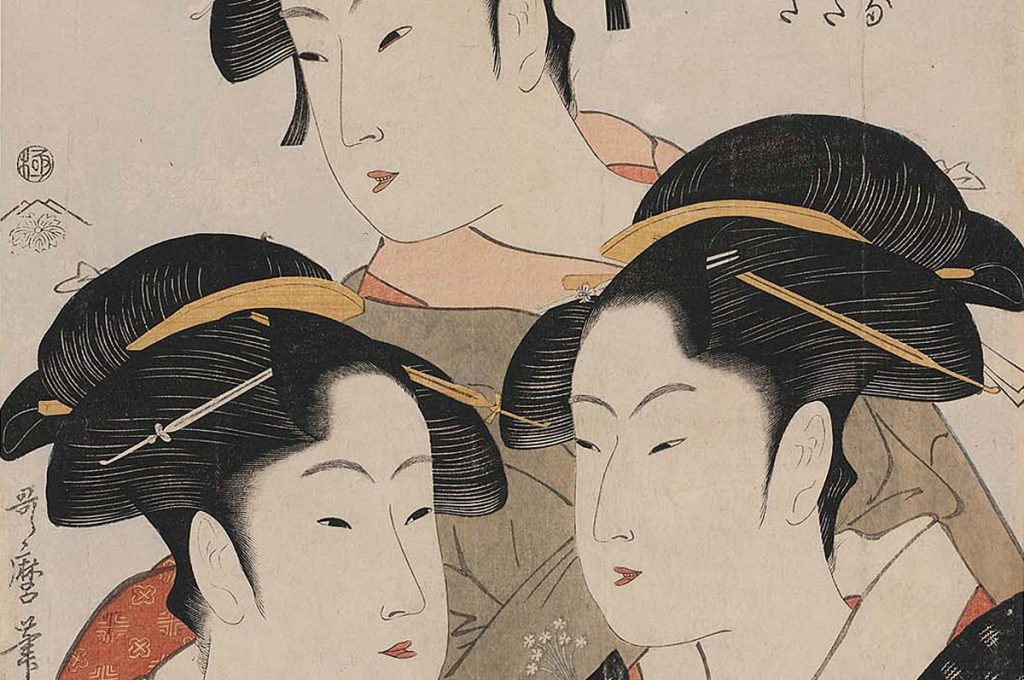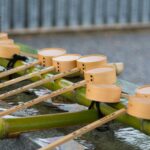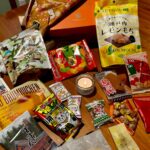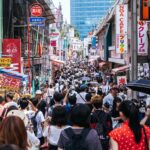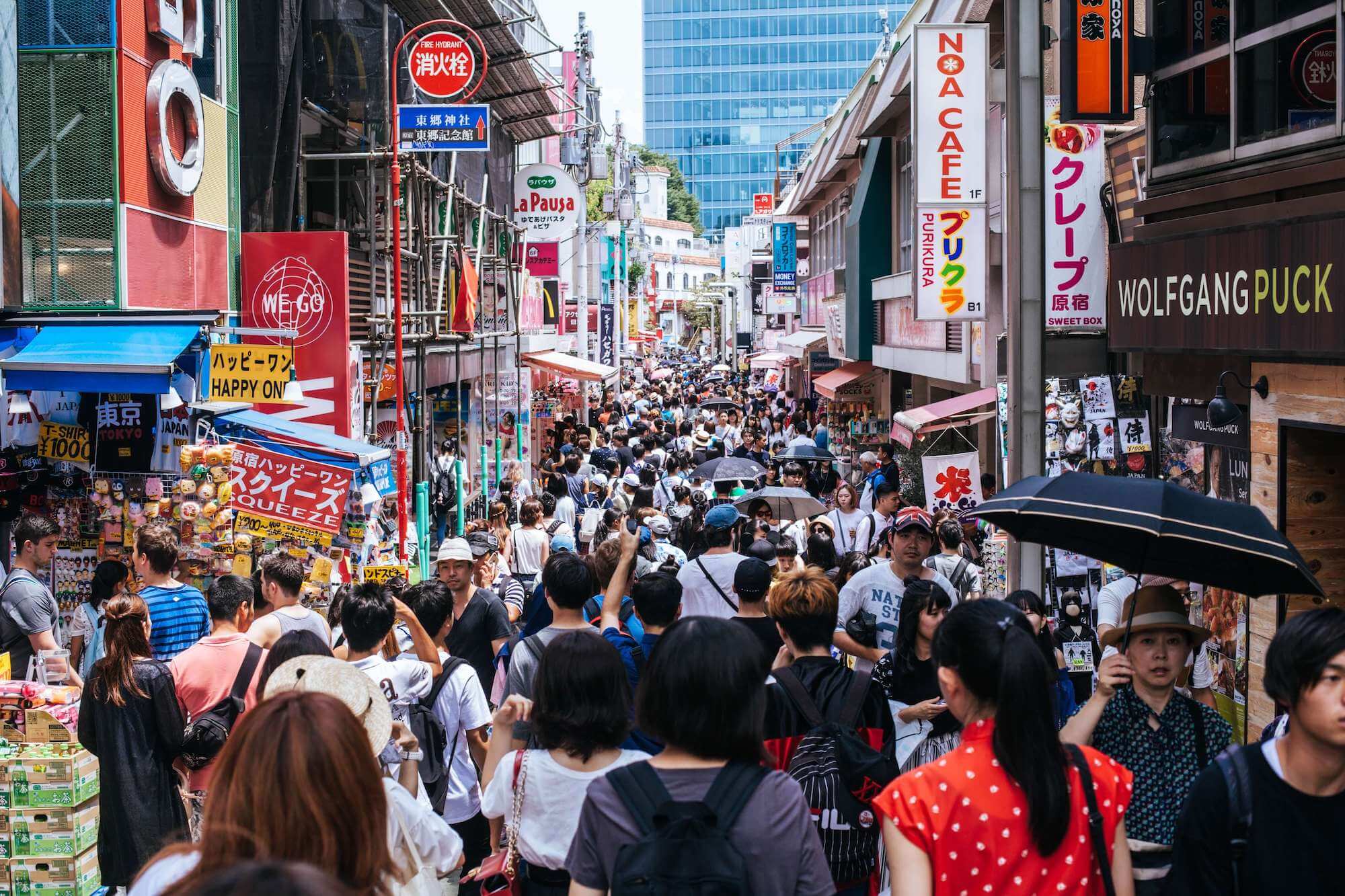Japan is home to many different varieties of art. From music and dance to paintings and origami, there’s no shortage of creativity to be found within the curious island nation. One particular branch of art flourished in Japan from 1672 until the 1880s, and is still quite popular to this very day. If you’ve ever seen the world-renowned painting “Under the Wave off Kanagawa” (also often referred to as “The Great Wave”), then you’ve already got a sense of what Ukiyo-e art has to offer.
Table of Contents
Introduction to Ukiyo-e

Credits: Leonid Ll
Ukiyo-e is multicolored woodblock print art. They were originally created to showcase current life and trends during the Edo Period in Japan. Many of these artworks feature warriors, performers, clothing, landscapes, and anything that was considered to be beautiful to the public eye in Japan. Ukiyo translates to ‘fleeting life’, and so Ukiyo-e stands for pictures of everyday life. Art pieces during these times were created to preserve and show off the wonder and beauty artists saw in Japan to as many people as possible.
The way Ukiyo-e works is both fascinating and detail-oriented: one person draws an image, another carves that image onto a woodblock, and a third person paints the woodblock and presses it onto paper to create the final image. The whole process takes much time and care for the first print to be made, but after that things run a lot more smoothly and multiple prints can be made with ease. The concept is similar to rubber stamps, but takes much more time and effort to achieve.
Want to know some interesting facts about the Edo period? Read it here Edo Period Japan – 10 Interesting Facts You Didn’t Know.
History and Origins of Ukiyo-e
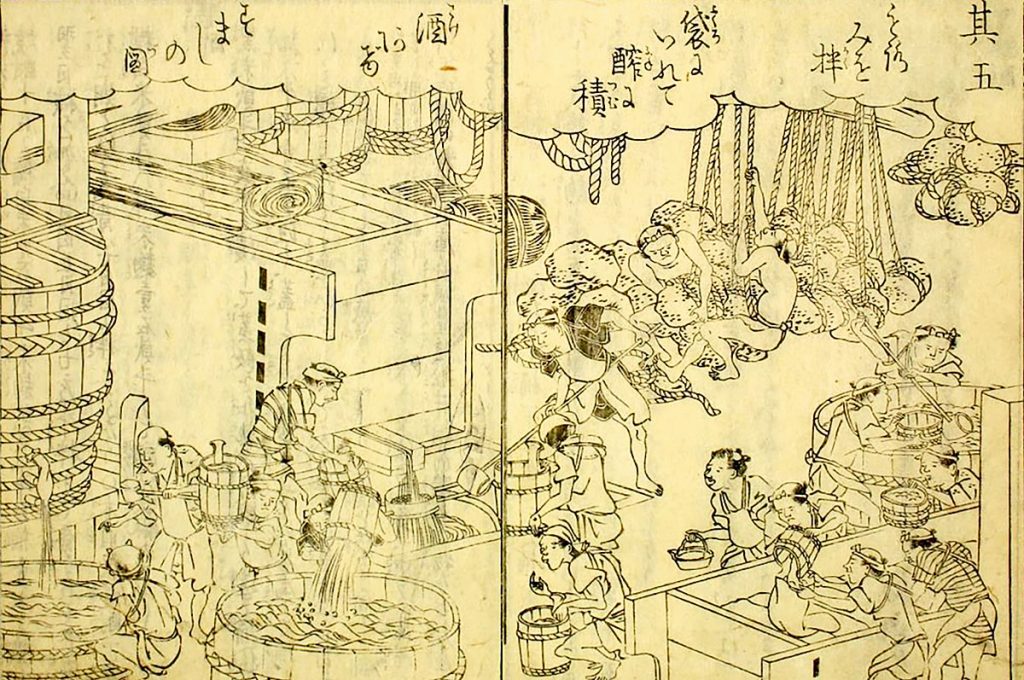
Credits: History Guide
During the Edo Period in Japan, there were huge social divides between the four classes: warriors, farmers, artisans, and merchants. Due to the fact that there were both physical and society boundaries that separated each of the classes, members of separate classes were only able to intermingle in brothels, teahouses, and theaters. It was mainly because of this common ground between them that artists started focusing their work to reflect the people they saw at those locations.
Though many Ukiyo-e works are of a more erotic or scandalous nature, some artists preferred to keep things PG by capturing the essence of a particular person or place in a single moment of time. The use of woodblock prints had been revolutionized by the Ukiyo-e movement, as they had only ever been used before to reproduce written works. Ukiyo-e artists took a technique that was centuries old and improved upon it; making portraits of famous courtesans and actors easily and readily available to everyone had never been done before. Anyone who wanted to be in on what was going on at the time was able to obtain up-to-date information on fashion trends, famous people, and many natural wonders Japan had to offer.
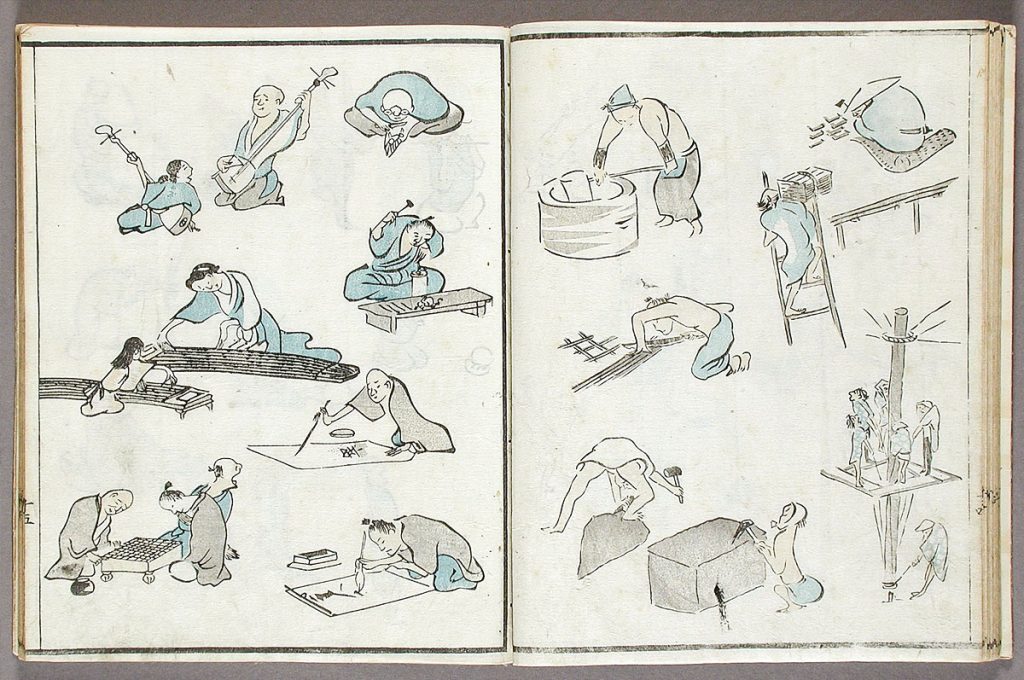
Credits: Ashley Van Haeften
The use of woodblocks to replicate pictures didn’t happen overnight, and took some time to perfect. Artists originally painted with simple black ink onto a paper, meaning that copies had to be painstakingly redrawn. Soon, many artists began adding more colors to their paintings, thus making their works more complicated. It was around this time that the woodblock was first used in order to mass reproduce a single work of art with very little hassle.
Unfortunately, this creative period of time in Japan came to an end with the death of Utagawa Hiroshige. After his passing, society changed drastically to try and conform with modern Western practices. The practice of painting with woodblocks was swept aside to make room for integration and the coming of a new age. Luckily, many of these pieces of art survived the cultural cleansing and can be enjoyed in modern times.
Ukiyo-e – A Unique Style
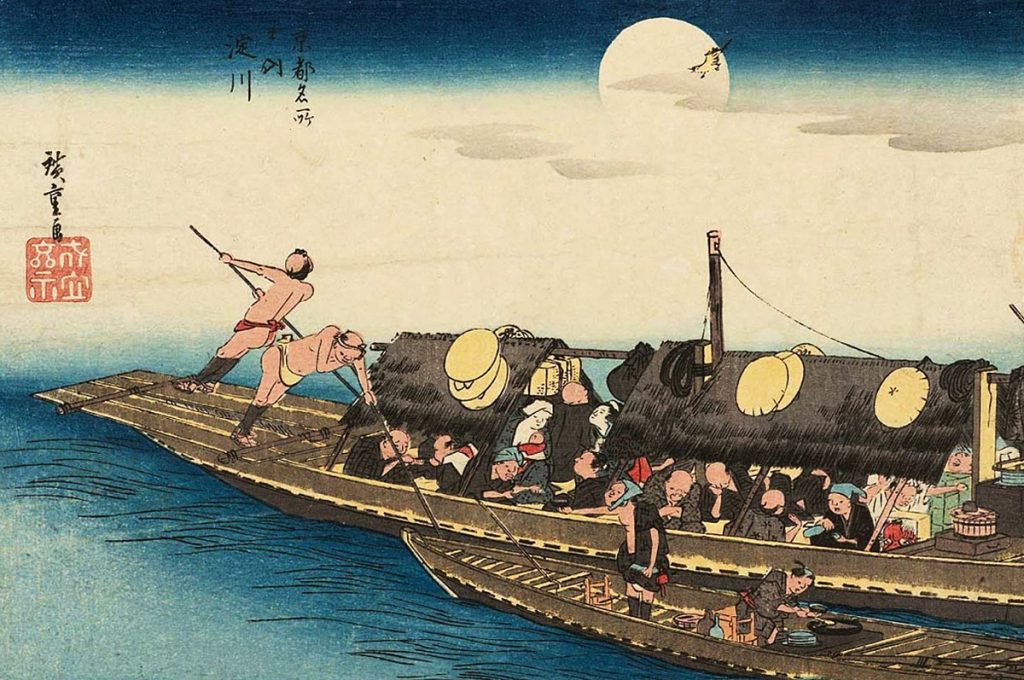
Credits: Leonid Ll
The three main subjects of Ukiyo-e – popular people, beautiful people, and landscapes – were the modern day equivalent of movie posters, magazine spreads, and postcards. Artists wanted to capture the feelings and raw emotions of what they were seeing in their everyday lives to preserve the memories and look back fondly on their lives. Times are always bringing change, but Ukiyo-e artists knew they would eventually want to remember their past in as much detail as possible.
When they gained enough recognition and had more assets, artists would travel and recreate the scenery from their trip. After a show or performance, they would immortalize the actor in print. Ukiyo-e artists had found a way to capture a moment without the use of photography and spread it across the land. Much like how anyone today can share a photo on the internet and have it be seen by thousands of people around the world, everyone in Japan was enjoying the art of Ukiyo-e. The art itself was an honest account of how the artists viewed and perceived the world around them and what they considered to be important enough to be documented.
Once Japan opened its borders and allowed people from all parts of the world to intermingle, the art of Ukiyo-e quickly spread. Legendary artists such as Vincent van Gogh and Claude Monet were said to have been awed and inspired by the powerful Ukiyo-e artwork of Japan. Funny enough, Europe had begun using Ukiyo-e prints on wrapping paper around the 19th century, which also had a great effect on many and exposed one of Japan’s most unique styles of art.
Ukiyo-e – The Most Famous Art Production
There are many pieces of art created from the Ukiyo-e movement. It’s hard to say which is best, but there are some works that have been greater influences than others. We’ll take a look at the top three works of art created during the Ukiyo-e period and see what makes them so memorable.
Two Lovers by Hishikawa Moronobu

Credits: Two Lovers by Hishikawa Moronobu
This work depicts two lovers sitting near one another, a sword and instrument nearby to show their roles in society. Hishikawa grew up with parents in the textile business, and as such had a strong grasp of the look and movement of fabric. An outer robe in the back of the painting seems to float by, as if caught by the wind, further demonstrating Hishikawa’s knowledge of how cloth reacts and behaves in real life. His ability to recreate these life-like details distinguishes him as one of the most revered Ukiyo-e artists of that time.
Hishikawa was a master of line work in his art, as he utilized his skills in calligraphy to create depth and dimension to his prints. Many artists after him took note of his style for seeing the extraordinary within the ordinary, as well as his attention to detail and precise lines.
Museum: The Metropolitan Museum of Art, New York
Three Beauties of the Present Day by Kitagawa Utamaro
Kitagawa’s work shows three women he considered to be insanely beautiful. Takashima Hisa (the girl on the left) and Naniwa Kita (the girl on the right) worked as servers in Kitagawa teahouses. The woman in the middle, Tomimoto Toyohina, was a beautiful geisha who caught the eye of many. The positioning of the three women is a direct reference to “The Three Vinegar Wine Tasters”, a 16th century painting that showcased Buddha, Confucius, and Laozi.
Called a nishiki-e, or full color print, the art is an example of how the style of using multiple colors was developed. By adding mica dust, Kitagawa was able to create a shimmering effect in the background of the photo; this was also a revolutionary technique that would go on to inspire others to create more interesting and exciting details in their own art. His work also went on to influence many artists, such as Henri Toulouse-Lautrec and James Abbott McNeill Whistler.
Museum: Museum of Fine Arts, Boston
Under the Wave off Kanagawa by Katsushika Hokusai
Arguably one of the most well known pieces of art to come from Japan, this piece is considered the epitome of Japanese art. The idea behind this work is to show Mt. Fuji, which is considered to be a symbol of immortality, overshadowed by a wave, which represents the elements of nature as a whole. Katsushika is subtly saying that nothing is immortal, and that just like the boats that can be seen floating under the wave about to crash down upon them, everything can come to swift, sudden end at any moment.
There was hardly an artist alive at the time who wasn’t influenced by Katsushika’s work, including (but not limited to): Vincent van Gogh, Auguste Rodin, Edgar Degas, Paul Gauguin, Claude Money, and Franz Marc. In the art world today, many have taken the famous picture and made it their own, either by turning the waves into pugs like Huebucket on RedBubble, or by turning the waves in Cookie Monster’s mouth. Katsushika’s work is still just as eye-catching today around the world as it was during the Edo Period in Japan.
Museum: The Metropolitan Museum of Art, New York
Ukiyo-e today

Credits: 其の拾五 by Haruyo Morita
In the 20th century, many Japanese people took on the same style exhibited in Ukiyo-e to create ‘travel sketchbooks’ after being prompted to explore the wondrous country of Japan. Prints have evolved in the 20th and 21st centuries to showcase the emotions and feelings of the individual.
Western methods have combined with the traditional woodcutting methods to produce new, yet familiar pieces that only serve to enhance the original experience these works of art created.
Regardless, Ukiyo-e artwork remains a prevalent, driving force of influence amongst artists and creative minds alike. No matter how many years pass, there will always be a wide-spread appreciation for the art Japan created during the Edo Period called Ukiyo-e.
What do you think of the beautiful art of Japanese Ukiyo-e, share your thoughts on our Facebook group. And be sure to follow us on Facebook, Instagram, and Pinterest, for all things fun about Japan!
Don’ forget to tune in next time!


